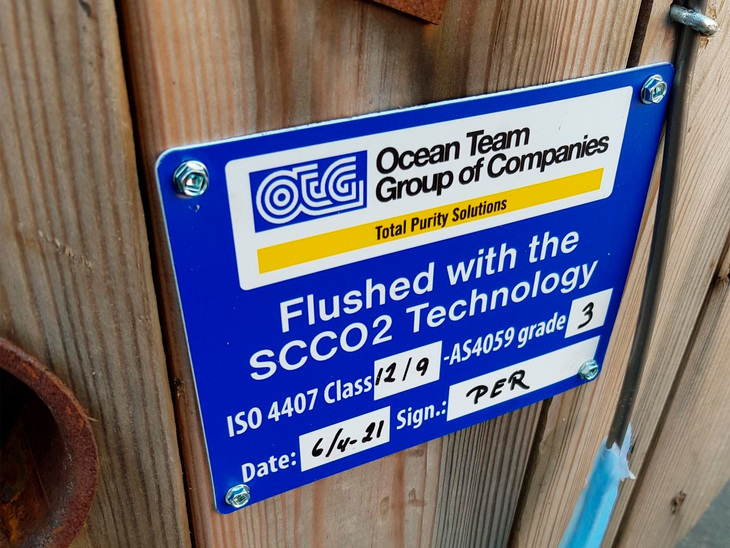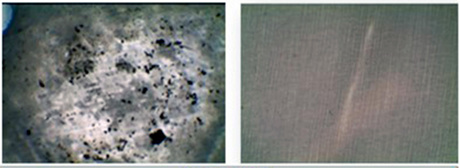How an oil producing company requested preflushed Control Lines, like they used to, and received blocking debris in their TRSSSV. -And how specifying their task, improves industry standards and our common safety.
Miscommunication Sets new Industry Standards
Avoiding failures in emergency situations in SSSV’s, installing perfectly clean control lines, keep work-over costs down. That is why oil producing companies demand a serious cleanliness level: a NAS class 6. - And their suppliers deliver exactly that: Control lines polished to a fluid measured NAS class 6. But the line walls are not! Clients are reporting back to us that they are shocked of the amount of dirt in brand new and unused lines that are preflushed with SV3 delivered by competitors.

Control lines flushed to a NAS class 3 before installation
Industry Cleanliness is Challenged
During operation, heating and cooling, pressure and depressurization, and eventual leakage pressure control, line wall particles, untouched by pre-installation polishing with laminar flow, are loosened. They proove to create leakages in seals, blockages in control lines and prevent SSSV’s proper functionality in a self-reinforcing manner. This effect is severely reduced and postponed when lines are flushed to a NAS 6 before installation - with turbulent flow. Turbulent flow purifies the liquid and tears off and carries out wax-like substances and other debris from the technical liquid carrying system: the line walls. Carrying Impurities out of the system. But the system is not dimensioned for the built-up pressure loss when flushing under turbulent conditions with RE>3000, even if the flushing medium is water with a low kinematic viscosity (10 cSt).
New Industry Standards are Demanded
Consequently, the use of NAS class 6 is inflated. A valid NAS class 6 is performed by the correct method:
For a NAS class 6 to remain a category 6 during operation, even line walls must be purified to a NAS class 6. This is only achievable operating flushing procedures with a turbulent flow with a RE number >3000. Such turbulent flow purification is proven to measure a NAS class 3.

Left: Competitor’s ‘clean’ sample NAS 12. Right: SCCO2 clan sample NAS 3
New Industry Standards
- Improved safety: Longer lifetime without incidents in seals, with blocked control lines and with properly functioning SSSV’s
- Industry standards can now benefit from a technical application, purifying to a NAS class 3
- Warranties from oil suppliers change accordingly, for a safer operation
- Reduced work-over costs per field creating a competitive financial solution for oil producing companies
Request RE >3000
Oil producing companies installing control lines are demanding a sufficiently specified task when requesting a turbulent flushing with a Reynold’s number greater than 3000. -And it is easily achievable. Best practice documents prove control lines to reach a NAS class 3 in as little as 3 hours under optimal conditions of variable parameteres. This particular oil producing company improves the flushing technology demanded to achieve a NAS class 3 of the fluid medium and of the line walls to support the ultimate goal of zero blockages in control lines and related valves.
Fact Box
Vendors deliver coils with fluid rated to a NAS class 6, as requested. The coil itself is not clean.
Testing the same coils under operation-like conditions, the coils are rated to a NAS class 12.
Purifying coils with CO2 in a super critical state using turbulent flow a NAS class 3 can be reached.